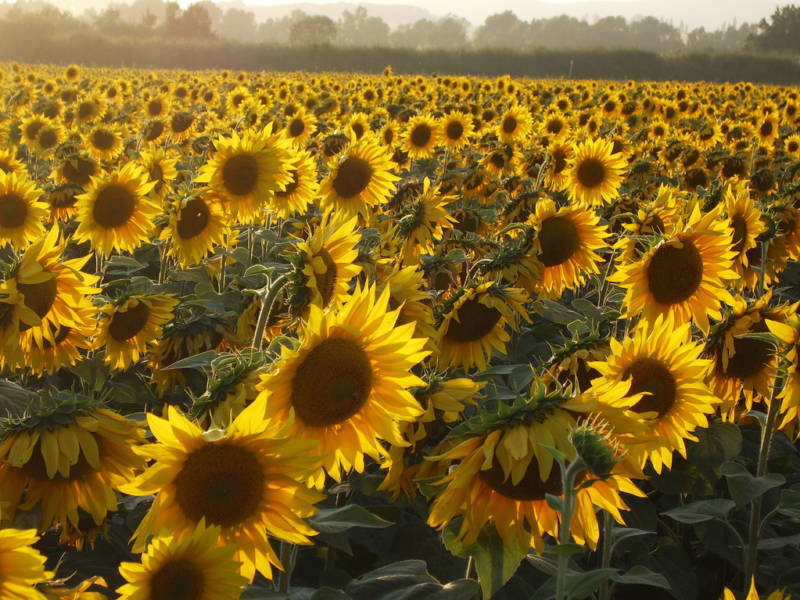https://youtu.be/GCRNHdGXTi4
“Growth rates on the east side were high during the day and very low at night, whereas growth rates on the west side were low during the day and higher at night,” the journal article reads. Here’s more:
“The higher growth rate on the east versus west side of the stem during the day enables the shoot apex to move gradually from east to west. At night, the higher growth rate on the west side culminates in the apex facing east at dawn.”
The researchers tied plants up so they couldn’t move or turned them away from the sun – and they found those flowers eventually had “decreased biomass and less leave area” than flowers that could move with the sun.
And in support of the circadian rhythm theory, plants exposed to artificial light at different intervals “could reliably track the movement and return at night when the artificial day was close to a 24-hour cycle, but not when it was closer to 30 hours,” the press release states.
Mature sunflowers respond differently to the sun. According to the press release, “as overall growth slows down, the circadian clock ensures that the plant reacts more strongly to light early in the morning than in the afternoon or evening, so it gradually stops moving westward during the day.”
The researchers compared mature flowers facing east with those they turned to face west, and found that the east-facing blooms attracted five times as many helpful pollinators.
That’s because the east-facing flowers heat up faster.
And, “bees like warm flowers,” as Harmer puts it.
“Just like people, plants rely on the daily rhythms of day and night to function,” Anne Sylvester, director of the National Science Foundation’s Plant Genome Research Program, says in a press release. “Sunflowers, like solar panel arrays, follow the sun from east to west. These researchers tap into information in the sunflower genome to understand how and why sunflowers track the sun.”
UC Berkeley professor and study co-author Benjamin Blackman says he thinks the connection between circadian rhythms and growth could be applicable to other research. “The more general point, that one of the circadian clock’s adaptive functions is to regulate the timing and strength of growth responses to environmental signals, is one that I think will apply to a broad range of traits and species,” he said.
Copyright 2016 NPR. To see more, visit http://www.npr.org/.
9(MDAxOTAwOTE4MDEyMTkxMDAzNjczZDljZA004))

9(MDAxOTAwOTE4MDEyMTkxMDAzNjczZDljZA004))